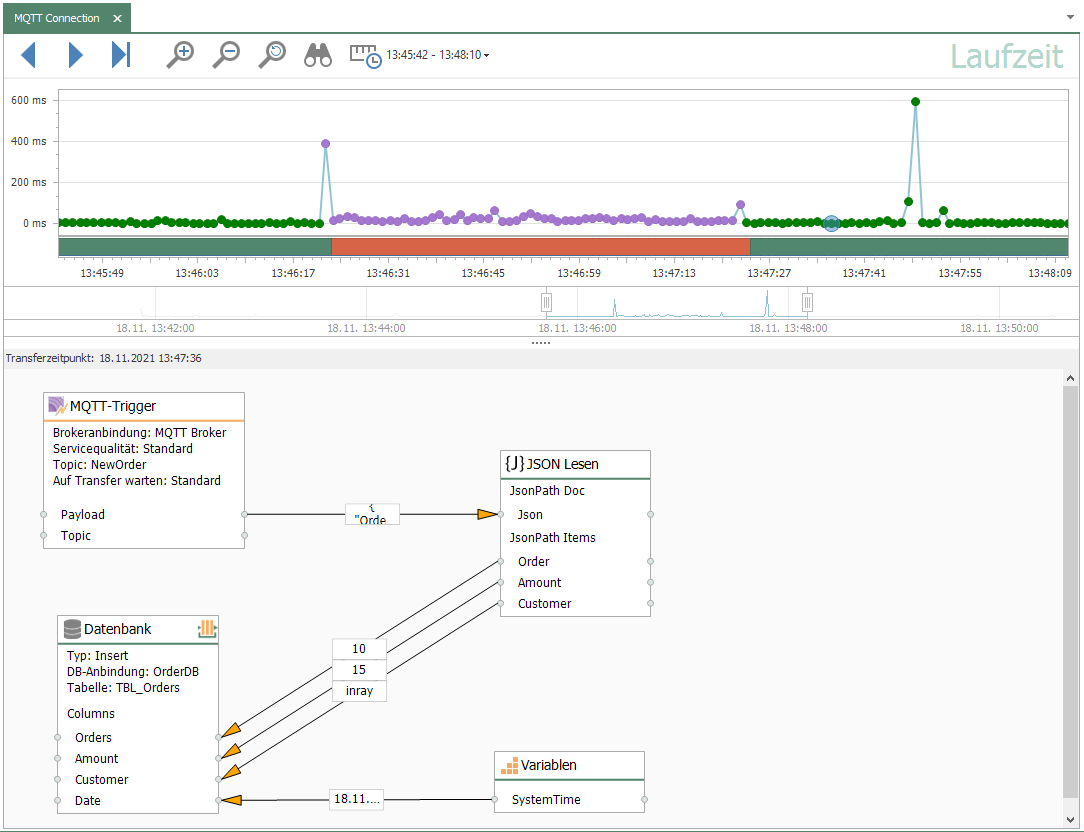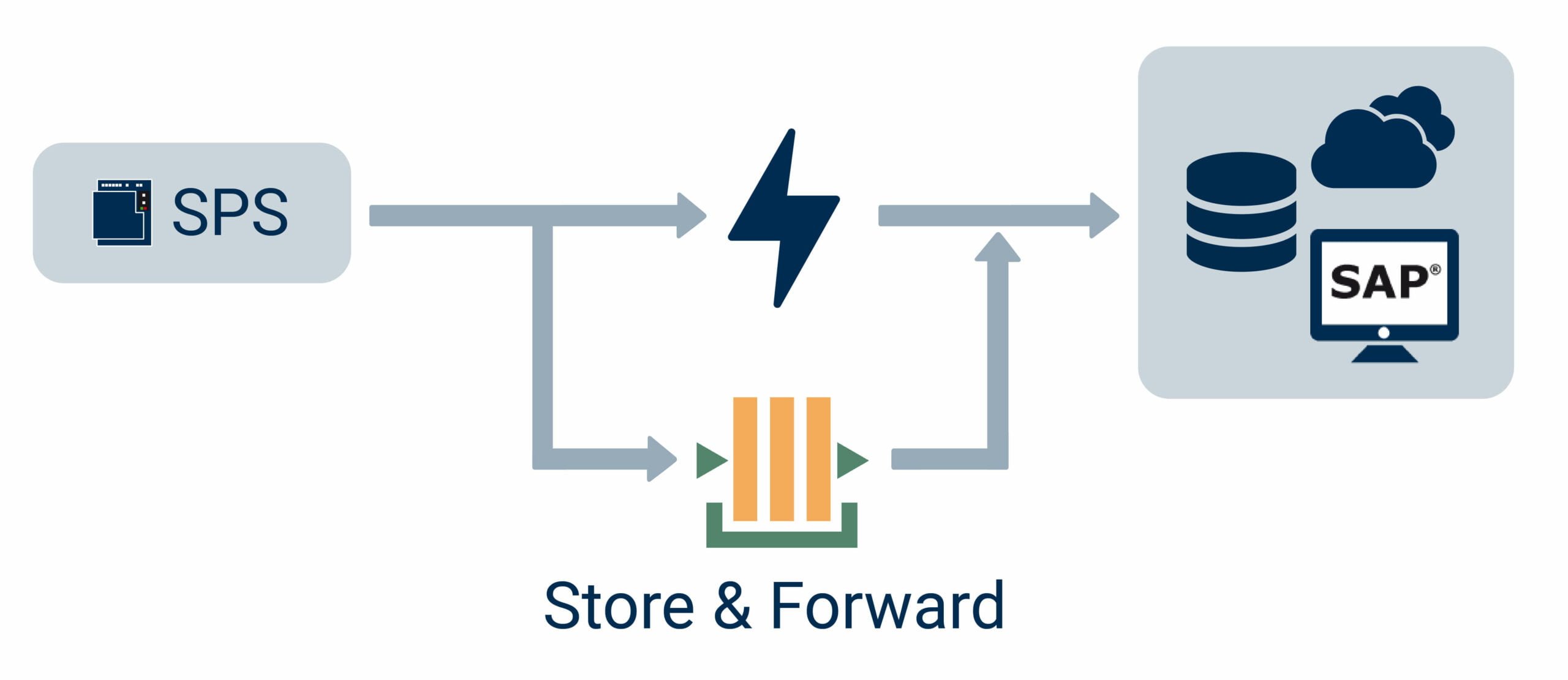Store & Forward
Datenverluste verhindern mit Store & Forward
Mit „Store & Forward“ wird Datenverlust verhindert, wenn Empfänger wie beispielsweise Datenbank-Server (Anbindung über das SQL-Server-Plug-in möglich) oder MQTT-Broker (Verbindung z.B. über das MQTT-Client-Plug-in) zeitweise nicht verfügbar sind oder wenn Datenbank-Anforderungen nicht schnell genug übertragen werden können. Sobald eine dieser Situationen eintritt, werden vom OPC Router sämtliche Daten aufgezeichnet und zwischengespeichert, die während eines Konnektivitätsausfalls erfasst werden. Bei der Wiederherstellung der Verbindung, werden dann die vom OPC Router gepufferten Daten nachträglich ausgelesen und zum ursprünglich gewünschten Empfänger übermittelt.
Das Add-on Store & Forward erweitert den OPC Router dahingehend, dass Daten aus instabilen und nicht zeitkritischen Kommunikationskanälen, die keine zu verarbeitende Rückantworten erwarten, lokal gespeichert und bei wieder hergestellter Kommunikation nachträglich übertragen werden können.
Ein detailliertes Video zum Thema „Ausfallsicherheit und Redundanz“ finden Sie hier in unserem Tutorial-Stream.
So funktioniert Store & Forward
Store & Forward Anwendungs-Beispiele
Einsatz in SAP- oder Datenbankumgebungen
Es gibt vielfältige Gründe, für einen kurzzeitigen geplanten oder ungeplanten Ausfall eines Zielsystems wie z.B. SAP oder Datenbanken. So kann eine Wartung, ein benötigtes Update oder ein regelmäßiges Backup genauso für einen Stillstand der Funktionalität sorgen, wie auch eine plötzlich auftretende Störung oder ein Netzwerkfehler.
Hier kann der Einsatz des Add-on Store & Forward durchaus sinnvoll sein. Mit Store & Forward werden die sonst entstandenen Datenlücken hier dann automatisch nachübertragen und geschlossen.



Store & Forward in der Cloud
Auch kann eine Big-Data-Analyse in der Cloud ein weiterer Einsatzfall für das Add-on Store & Forward sein. Hier werden beispielsweise statistische Produktionsdaten für spezielle Auswertungen erfasst.
Sollte es durch eine Störung zu einem Verbindungsausfall kommen, können die permanent anfallenden Daten nicht mehr in die Cloud übertragen werden. Die sonst verlorenen Daten werden mit dem Einsatz von Store & Forward lokal zwischengespeichert und bei Wiederherstellung der Verbindung dann nachträglich übertragen.
Dieses ist in diesem Fall problemlos möglich, da diese Statistik-Daten nicht umgehend und direkt für Prozesssteuerungen ausgewertet werden müssen.
Haben Sie noch nicht die richtigen Informationen gefunden?
Hier finden Sie weitere Informationen zu unserer Software sowie eine Übersicht aller verfügbaren OPC Router Plug-ins. Wir stellen Ihnen auch eine kostenlose Demo zur Verfügung, mit der Sie eine voll funktionsfähige Version des OPC Routers testen können.


